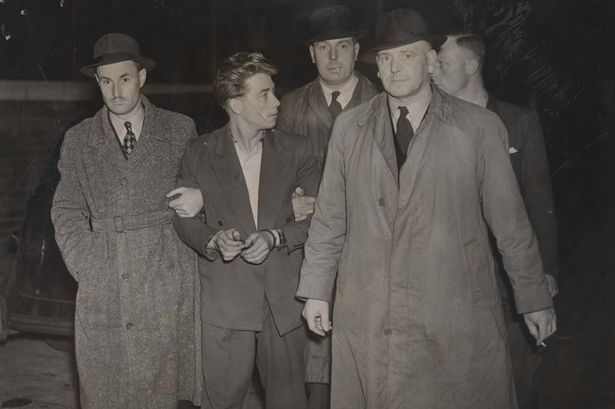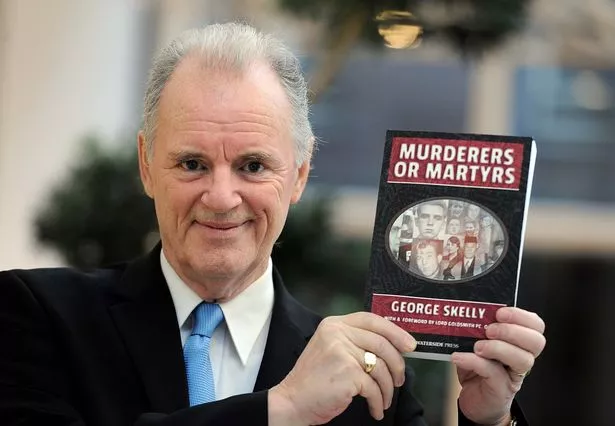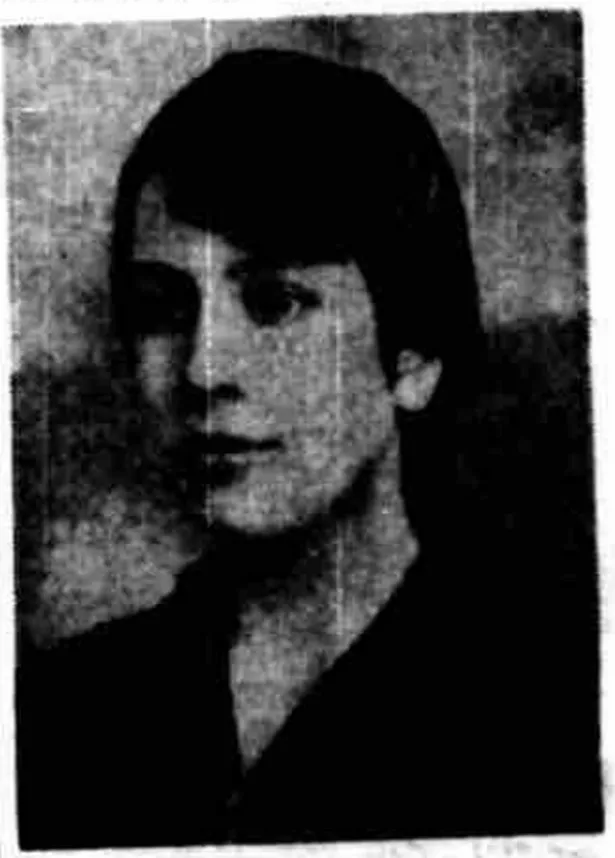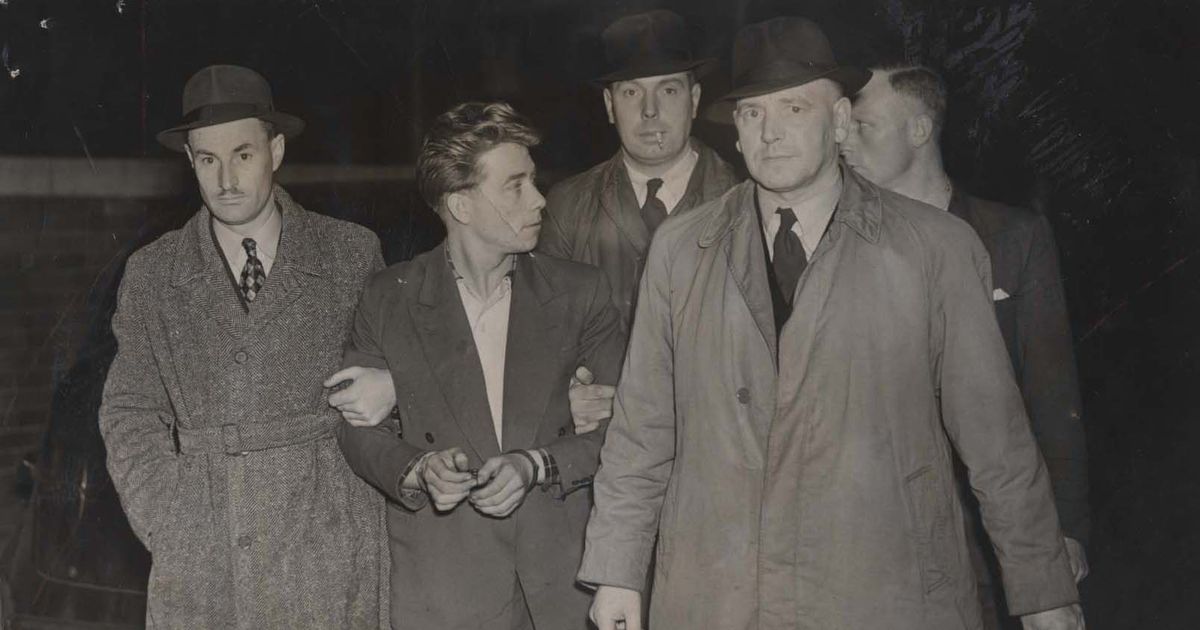The Ministry of Justice has confirmed an exhumation took place last week at Walton Prison
19:00, 15 Apr 2025Updated 19:42, 15 Apr 2025
 Edward Devlin with detectives after his arrest for the murder of Beatrice Alice Rimmer
Edward Devlin with detectives after his arrest for the murder of Beatrice Alice Rimmer
The bodies of two men executed for the murder of a Wavertree widow were exhumed last week from a grave in Walton Prison, the Ministry of Justice has confirmed. Edward Devlin, 20, and Alfred Burns, 21, were hanged together in a rare double execution at the prison on April 25, 1952.
The two men were convicted of killing Beatrice Rimmer – who was often known as Alice – in Cranborne Road, Wavertree on August 19, 1951. Mrs Rimmer was found dead at home a day later. She had been battered to death the previous evening after returning home from seeing her 25-year-old son Thomas at his home in Madryn Street, Toxteth.
The ECHO understands the two men’s bodies were exhumed last week at the site of a former exercise yard for prisoners on the Walton Prison estate. The exhumation reportedly took place at the request of one of the men’s families.
The Ministry of Justice has confirmed the bodies of Devlin and Burns were exhumed. According to the ministry, the bodies “will undergo DNA testing before being returned to their families for private burials or cremation”.
The death penalty was abolished in 1965, but following the abolition, the then-Home Secretary said he would “consider sympathetically” any request to remove the remains of any executed prisoner for private burial.
 Alfred Burns (left) and Edward Devlin (right), were both accused of the murder or Beatrice(Image: ECHO)
Alfred Burns (left) and Edward Devlin (right), were both accused of the murder or Beatrice(Image: ECHO)
The convictions of Devlin and Burns have been the subject of controversy. They were based on the testimony of supposed accomplices, rather than forensic evidence.
Merseyside author George Skelly, who has written a book on the case called ‘Murderers or Martyrs’, believes the men were innocent of Mrs Rimmer’s murder.
He told the ECHO he went to Walton Prison last week to “pay his respects” to Devlin and Burns as their bodies were exhumed. He claims the bodies were exhumed to remove the “stigma of a prison grave”.
Mr Skelly has been trying to clear the men’s names for many years, and hopes that one day, Devlin and Burns will be posthumously pardoned.
 Author George Skelly, whose book, Murderers or Martyrs? looked at the case of Edward Devlin and Alfred Burns(Image: Jason Roberts)
Author George Skelly, whose book, Murderers or Martyrs? looked at the case of Edward Devlin and Alfred Burns(Image: Jason Roberts)
In 2011, he tried and failed to get the Criminal Cases Review Commission to consider their case, but is planning to make a second attempt.
According to Mr Skelly, the men’s alibi put them at the scene of a warehouse break-in in their native Manchester, miles from the scene of Mrs Rimmer’s murder in Wavertree. But a Liverpool jury took just 75 minutes to return guilty verdicts.
He told the ECHO in 2013: “Liverpool juries were worse than hanging judges! At that time, you had to be a property owner to sit on a jury – and they tended to be pro-police and biased against any criminals who had been involved in house-breaking.”
He added: “Burns and Devlin were supposed to be in Alice Rimmer’s house for 90 minutes before she returned. I’m amazed that the jury believed they could be there for that length of time and not disturb anything.”
On the eve of his execution, Devlin wrote to his mum: “Don’t worry. We know we’re innocent. If we die we will die as martyrs, not murderers.”
 A picture of Beatrice Alice Rimmer as a young woman(Image: British Newspaper Archive)
A picture of Beatrice Alice Rimmer as a young woman(Image: British Newspaper Archive)
In 2018, a BBC documentary, Murder, Mystery and My Family, explored the case, casting fresh doubt on the convictions of Devlin and Burns.
Lindsay Langlands, a direct descendant of Burns, flew from Australia as part of the documentary to uncover the truth about her relative.
She said she hoped the programme would prove their innocence.
At one point in the programme, criminal barrister Jeremy Dein called into question the forensic evidence, arguing there was only one attacker, rather than the two suggested in court.
Further tests by a pathologist suggested that the prosecution’s belief the murder was carried out with a kosh was not correct – he believed it was actually carried out with an axe.
The re-construction brought up no scientific evidence to link Devlin and Burns to the killing of Alice Rimmer.
There were also several problems with witness statement which lawyers identified.
George McLoughlin, a 19-year-old prolific criminal, testified that Devlin and Burns could have carried out the murder.
His witness statement, which mentioned another name in connection with the murder, was not shown to the jury – evidence Mr Dein described as “gold dust” to the defence.
Another statement, from a woman who was a love interest of Devlin’s, claimed she had overheard a conversation in which Devlin and Burns discussed robbing an old woman.
However, both barristers questioned whether this witness would be considered as reliable in a modern-day court room, as her relationship with the accused could have been motivation to mislead police.
 The Liverpool Echo headline relating to Mrs Rimmer’s murder(Image: British Newspaper Archive)
The Liverpool Echo headline relating to Mrs Rimmer’s murder(Image: British Newspaper Archive)
It also revealed a week earlier she had implicated somebody else in the crime, too – which the barristers believe further discredited her evidence.
However another witness, Marie Milne, a 17-year-old with no criminal history, claimed she was drawn into a scheme to rob Mrs Rimmer by acting as a look-out and heard Devlin saying to Burns: “Will the woman live?”
Mr Skelly has made comparisons between this case and the infamous Cameo Cinema murders which took place in 1949, also in Wavertree.
The Cameo cinema murders rocked the city and led to the biggest manhunt the city had ever seen. Leonard Thomas, 44, manager of the Wavertree cinema, and his assistant, John Catterall, 30, were killed during a bungled burglary in March of that year.
The murders and investigations placed a lasting stain on the reputation of British justice when it was revealed an innocent man was executed.
In October 2003, the family of Liverpool man George Kelly, who was wrongly hanged for the crime, received an official apology from the state.
